
|
|
|
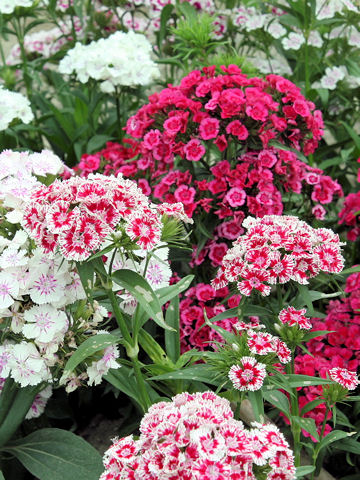 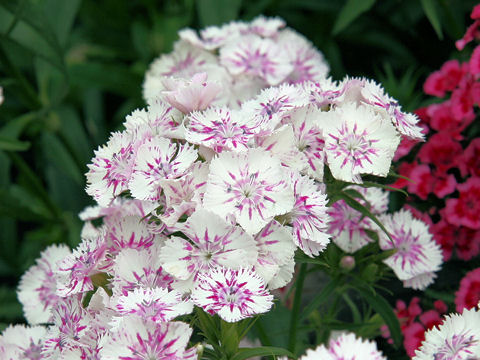 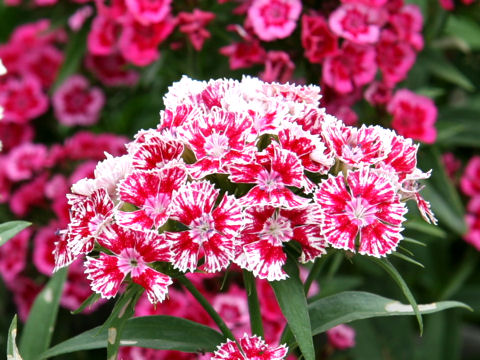 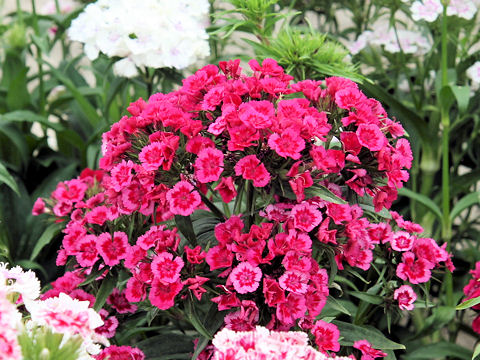 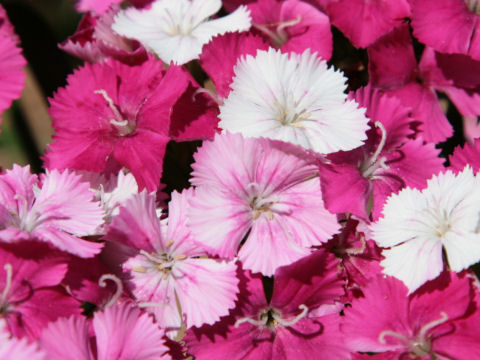 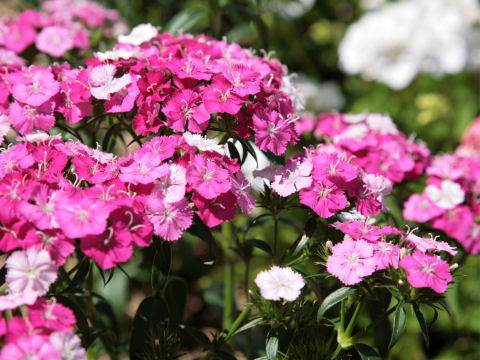 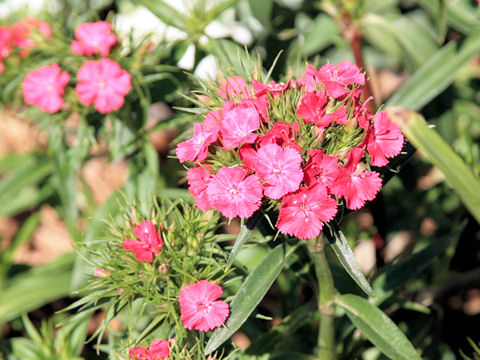 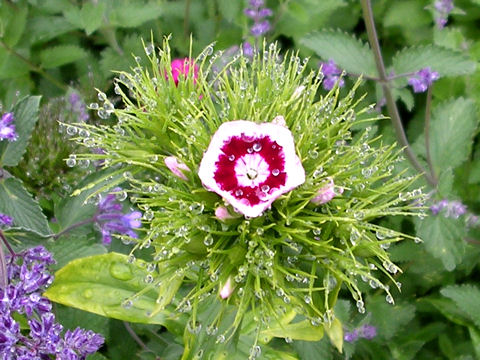 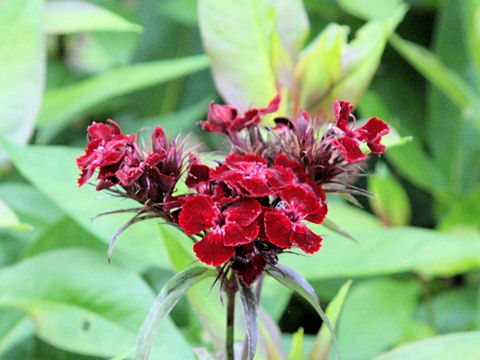 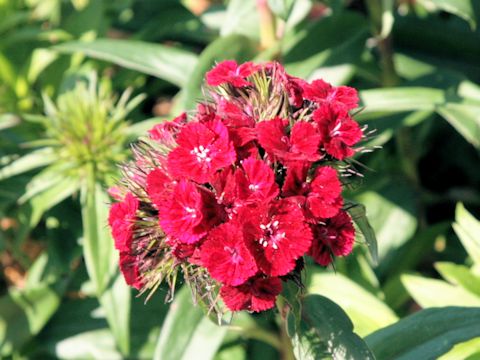 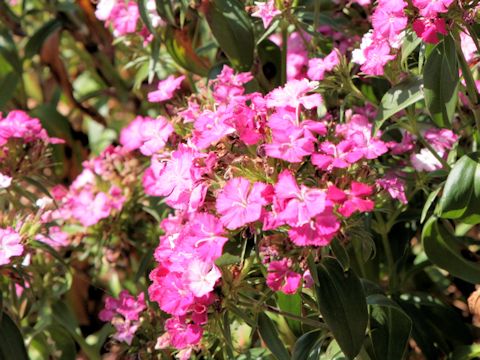 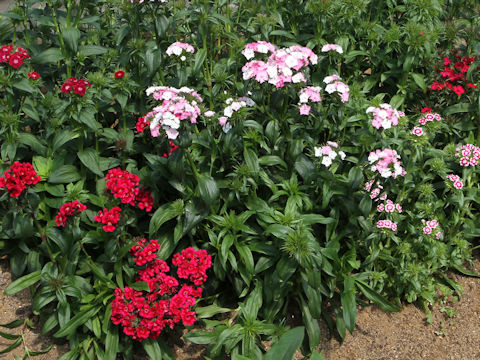 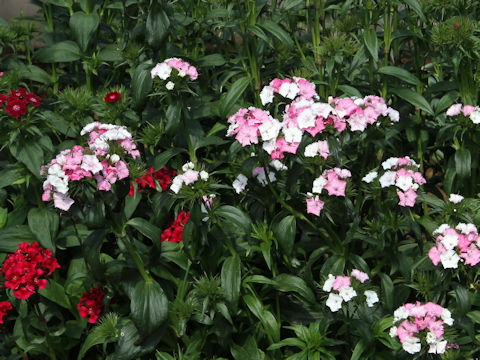 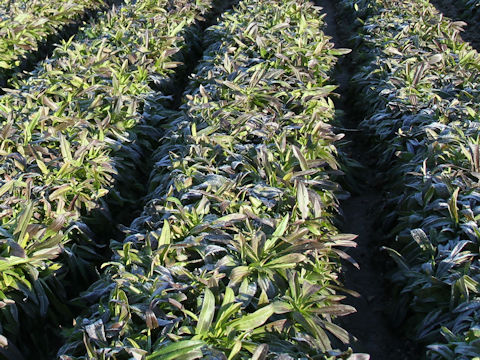 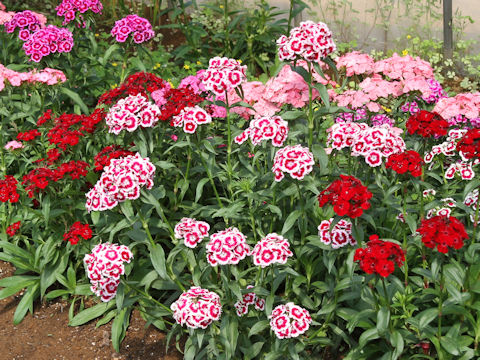 |
|
|
|
ヨーロッパの南部が原産です。わが国へは明治時代の中頃に渡来しています。草地に生え、高さは30〜60センチになります。葉は披針形で対生します。夏に茎頂や葉腋から集散花序をだし、ピンク色から紫色の花を咲かせます。花弁は5個で、花柱は2個あります。園芸品種も数多く作出されています。総苞が長く髭のように生えることから、別名で「ひげなでしこ(髭撫子)」とも呼ばれます。 |
|
|
ナデシコ科ナデシコ属の多年草で、学名は Dianthus barbatus。英名は Sweet william。 |
|
|
The Sweet william (Dianthus barbatus) belongs to Caryophyllaceae (the Carnation family). It is a perennial herb that is native to south Europe. This herb was introduced into Japan in the midium term of Meiji Era (1868-1912). Sweet william grows in grassland and can reach 30-60 cm in height. Leaves are lanceolate and opposite. Pink to purple flowers come on the terminal or axilary cymes in summer. The flower has 5 petals and 2 styles. Many cultivars are breeded. Sweet william is characterized by the long beard-like bracts. |
|
|
[上・中1〜3] 大阪府枚方市招提元町にて、2007年05月16日撮影。 [中4・中5] アメリカ・テキサス州ダラス市「ダラス植物園」にて、2006年04月14日撮影。(photo by Jon Suehiro) [中6] 同上にて、2007年03月10日撮影。(photo by Jon Suehiro) [中9・中10] 同上にて、2008年03月21日撮影。(photo by Jon Suehiro) [中7] イギリス・スコットランド・ネアン州「コーダー城」にて、2007年06月17日撮影。(photo by Aya Suehiro) [中8] スイス・ベルン州・グリンデルワルトにて、2007年06月28日撮影。(photo by Jon Suehiro) [中11・中12] 千葉県香取市大角にて、2014年04月22日撮影。 [下] 同上にて、2015年05月27日撮影。 [中13] 茨城県つくば市小田にて、2015年01月24日撮影。 |

|
|
Shu Suehiro |